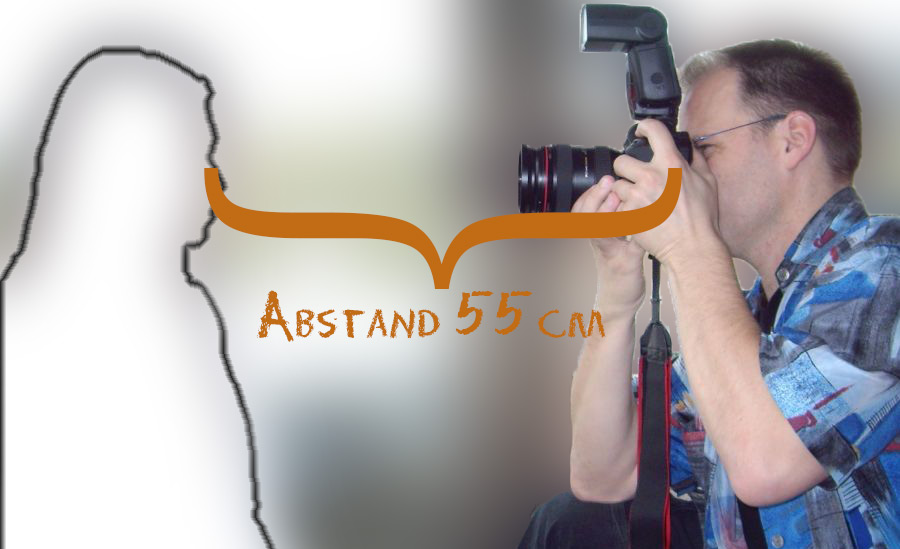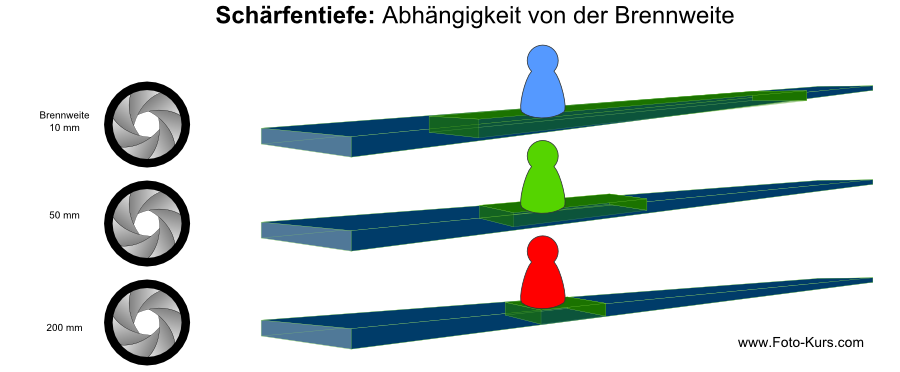
Depth of field as a design element
- Camera:
- Canon EOS 5D Mark II
- Aperture:
- f/2,8
- Exposure:
- 1/125 Sek.
- ISO:
- 100
- Focal length:
- 70 mm
Depth of field in photography - show the essential
In photography we do have one exact focal plane - everything in front and everything behind is more or less sharp. Where the sharpness is, and above which range it spreads is all influenced by the photographer. In this way the photographer can deliver an intension of an image towards the later observer of it and the observer does not loose himself in unnecessary elements, which can be seen on the photo. That way you can show the essential aspect of a photo or a person.
This can go so far that you can tell a story with the chosen sharpness and depth of field (abbreviation: DOF).
To influence the depth of field we have 3 possible determinants, which can be used at the same time or altogether. For a better understanding we examine the 3 determinants one after another.
The depth of field is influenced by the following 3 determinants, which the photographers can vary:
- Used aperture
- Distance to the object
- Focal length
Depth of field and used aperture
In the following example the distance between the photographer and the model is around 80 cm. The model turns her head away from the photographer - viewing direction 4 o'clock. None of the pictures have been reworked to better show the true effect of blur. Through re-sharpening we could rework the picture and gain some more sharpness out of it.

Experimental setup for depth of field
This setup (distance and viewing direction) has for our example the advantage that we can clearly see the blur in the right eye. This effect often gets used in portrait photography - sometimes because something went wrong, sometimes because somebody used it on purpose.

Depth of field with an aperture value of f/2,8
With an aperture value of f/2,8 we have extremely less depth of field - the eye right in the picture is blurred.

Depth of field with an aperture value of f/4
Aperture f/4 helps a little.

Depth of field with an aperture value of f/6,5
Aperture f/6,5 and the base of the eyelashes and the right eye gets sharper.

Depth of field with an aperture value of f/10
Aperture f/10 and the right eye slowly gets sharper on the picture.

Depth of field with an aperture value of f/16
Aperture f/16 and the right eye is relatively sharp on the picture (we can gain some additional sharpness by reworking it. The strand further behind is still not sharp.
In this picture row you can nicely observe, how the effect of a sharp or rather blurred depicted eye is onto the observer.
Separation foreground and background with sharpness/blurriness
Especially by using depth of field we can let a distracting background disappear in blurriness.
Accordingly, we have a dependence between depth of field and aperture, as I illustrated in the following graphic. The green section marks the still sharp depicted areas. The higher the aperture value, the more depth of field we have.

Depth of field depending on the aperture
The dimensions of depth of field can be calculated - but, it is more important to know that in general every camera has an extra key to test the depth of field - short the depth-of-field preview button. This key activates the aperture that we can examine the depth of field in the viewfinder. This needs some practice, because there is less light in the viewfinder when working with high aperture values.
Tips on portrait photography: For portrait photography it is extremely important that the eye, which is closer to the observer, gets depicted sharp. It is even better when both eyes get depicted sharp. The observer gets a strange impression when the eye that is further from the observer is sharp on the picture, while the one closer to the observer is blurred. Just test it out to see the difference!
Depth of field and distance to the object
An additional variable is the distance towards the object you want to take a photo of; it heavily influences the depth of field.
The closer the object, the lower is the depth of field.

Depth of field is dependent on the distance
When focusing the camera onto a further away object then you get more depth of field. That is the reason why landscape pictures have a big focus range.
The other extreme is macro photography – there, extremely less focus range is present, as we want to depict the object as big as possible and that is the reason why we move as close as possible towards it. Additionally, you will have a truck-load of fun when the object is moving (Believe me, it is a huge pain in the #!~). As we mostly work in macro photography with a depth of field of 1 mm.
Depth of field and focal length
The set focal length also directly influences the depth of field.
Wide-angle lenses have much more depth of field than tele lenses.

Depth of field depends on focal length
The graph shows the object we want to photograph in every case as far away and with the same aperture setting. Depending on the focal length we get more or less depth of field - the more we zoom the less depth of field we get.
Depth of field before and after the focal plane
As indicated in the graph, the extent of depth of field infront of the object is smaller than behind the object. Sometimes you can read about ratios of 1/3 to 2/3 - what is not the whole reality. This distribution is also dependent on several other factors. But as an approximation it is okay.
Depth of field and size of the image sensor
The size of the image sensor also influences the depth of field. The bigger the image sensor the easier we can use the depth of field to creatively create blur.
That is the reason, why small compact cameras and smartphones, which have a tiny image sensor, mostly create image which are completely sharp in the foreground as well as in the background.
Quintessence Depth of Field
Depth of field is a huge design element in many areas of photography to lure the gaze of an observer towards what matters. How and where to use it can, and should, be trained.
The three factors like the chosen aperture value, the distance towards the object and the focal length can all be combined and also the dependence on the size of the image sensors makes its use difficult for beginners. But then the results clearly convinces!
Beautiful results with blur can be achieved with lenses with an aperture value of f/2,8 or less.